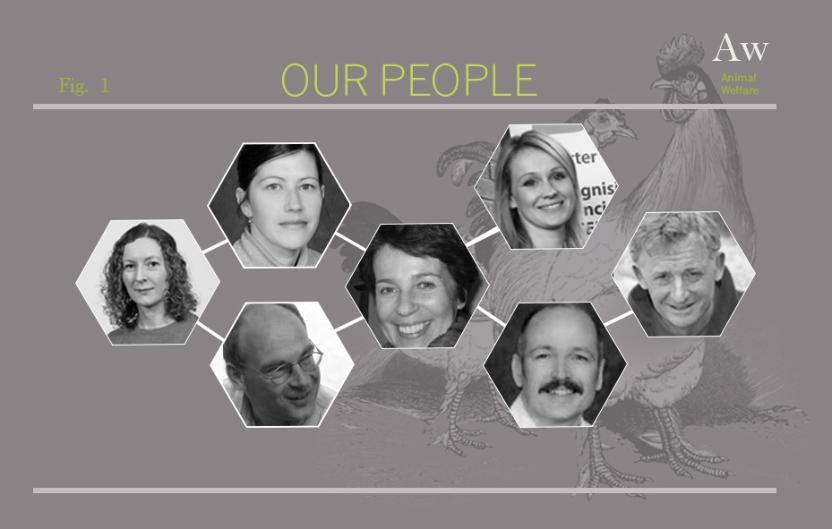Animal Welfare
Our research aims to understand and improve the welfare of animals using tools from physiology, behaviour and neuroscience
Overview
Our research focusses on a wide range of topics in various animal use contexts, and encompasses novel approaches to welfare assessment, understanding animal needs, identifying underlying mechanisms and validating actions aimed at improving welfare. We have a longstanding working relationship with the Scottish Society for the Prevention of Cruelty to Animals.
Specific projects include field investigations of lameness detection using radar sensing in ruminants, laboratory work on non-invasive stress assessment in rats using thermal imaging, effects of urbanisation on the welfare of wild bats, investigation of novel slaughter methods in poultry and pigs, and environmental enrichment of shelter dogs. We also engage with animal ethics, for example using questionnaire-based studies to explore societal attitudes towards animals.
We work with a range of domesticated and non-traditional model organisms. These include chickens (Gallus domesticus), sheep (Ovis aries), cattle (Bos taurus), pigs (Sus scrofa), rat (Rattus norvegicus), mice (Mus musculus), cat (Felis catus), dog (Canis lupus familiaris) and zebra finches (Taeniopygia guttata). In addition, we have interests with wild animal species including bats (Pipistrellus spp), wolves (Canis lupus) and wildebeest (Connochaetes taurinus).
Selected Publications
Gladden, N, Ellis, K, Martin, JE, Viora, L, McKeegan, DEF. 2019. A Single Dose of Ketoprofen in the Immediate Postpartum Period has the Potential to Improve Dairy Calf Welfare in the First 48 hours of Life. Applied Animal Behaviour Science.
Maxwell N, Buchanan C, Evans NP 2019 Hair cortisol concentrations, as a measure of chronic activity within the hypothalamic-pituitary-adrenal axis, is elevated in dogs farmed for meat, relative to pet dogs, in South Korea. Animal Welfare 28:389-395.
Busin V, Viora L, King G, Tomlinson M, LeKernec J, Jonsson NN, Fioranelli F. 2019. Evaluation of lameness detection using radar sensing in ruminants. Veterinary Record
Jonsson NN, Ferguson HJ, Koh-Tan HHC, McCartney CA, Cernat RC, Strachan EM, Thomson W, Snelling TJ, Harvey CD, Andonovic I, Michie C, Wallace RJ. 2019 Post mortem observations on rumen wall histology and gene expression and ruminal and caecal content of beef cattle fattened on barley-based rations. Animal,
Shrestha A, Loukas C, Le Kernec J, Fioranell F, Busin V, Jonsson NN, King G, Tomlinson M, Viora L, Voute L. 2018. Animal Lameness Detection with Radar Sensing. IEEE Geoscience and Remote Sensing Letters, 15:1189-1193
Muvhali PT, Bonato M, Engelbrecht A, Malecki IA, Hough D, Robinson JE, Evans NP, Schalk WPC. 2018 The Effect of Extensive Human Presence at an Early Age on Stress Responses and Reactivity of Juvenile Ostriches towards Humans. Animals. 8: 175.
Bowman A, Scottish SPCA, Dowell FJ, Evans NP 2017 The effect of different genres of music on the stress levels of kennelled dogs. Physiology and Behaviour 171:207–215.
Hill DL, Wall E, 2017. Weather influences feed intake and feed efficiency in a temperate climate. Journal of Dairy Science, 100:2240-2257.
Martin, J.E., Christiansen, K., Vizzier-Thaxton, Y., Mitchell, M.A. and McKeegan, D.E.F. 2016. Behavioural, brain and cardiac responses to hypobaric hypoxia in broiler chickens. Physiology and Behavior, 163: 25-36.
Herborn KA, Graves JL, Jerem P, Evans NP, Nager R, McCafferty DJ, McKeegan DEF. 2015. Skin temperature reveals the intensity of acute stress. Physiology and Behavior, 152 (A): 225-230.


